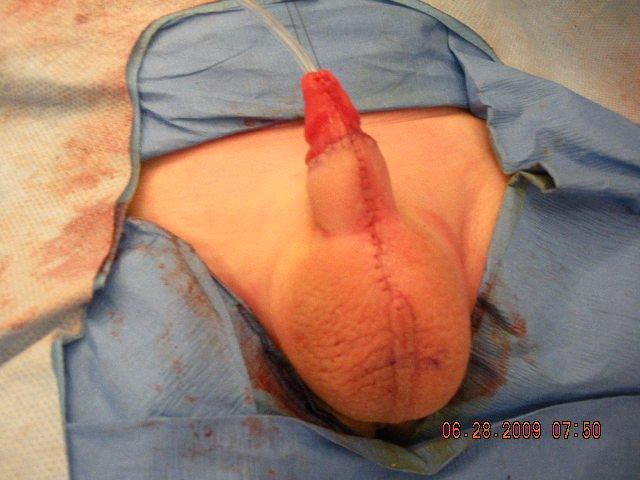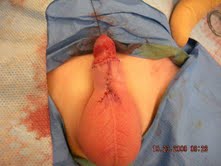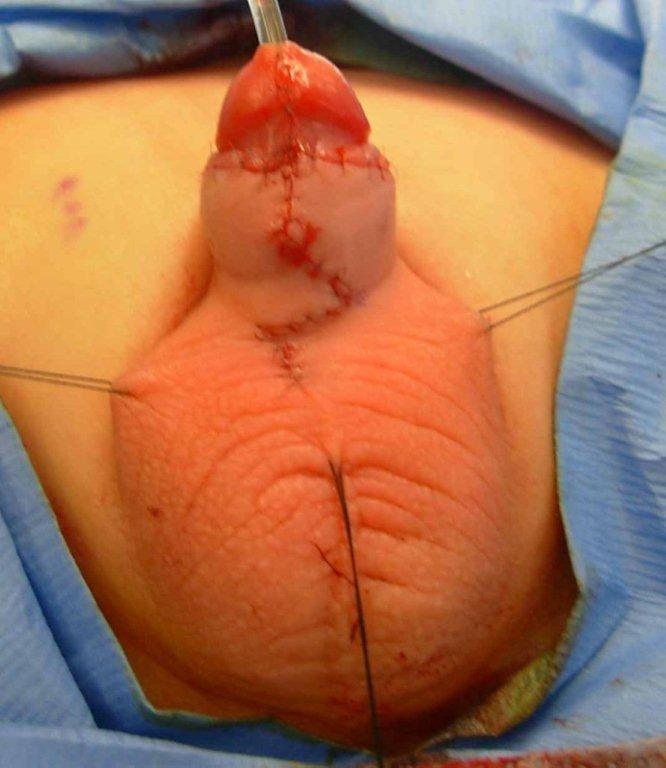|
Back to Fall Congress
A Randomized Prospective Comparison of Three Surgical Techniques for Correction of Congenital Peno-Scrotal Webbing in Infants
Ronnie Fine, MD, Moneer K. Hanna, MD, FRCS.
Cohen Children's Medical Center, NEW YORK, NY, USA.
BACKGROUND:
Congenital peno-scrotal webbing is the condition in which the scrotal skin extends onto the ventral aspect of the penis, and the normal peno-scrotal angle is absent. The deformity becomes more obvious as the child grows, and may interfere with sexual function during adulthood. Several surgical approaches have been applied to the correction of this malformation; however, to our knowledge, this has never been studied in a systematic fashion. In this study, we set out to compare three surgical techniques for correction of peno-scrotal webbing and determine whether one proved to be superior. Here we present our results and complications.
METHODS:
Between February 2008 and December 2011, 150 patients 6 months to 3 years old, with congenital peno-scrotal webbing, were referred to a single surgeon for surgical correction. They were prospectively assigned, in a randomized fashion to undergo a Heineke-Mikulicz (H-M) repair (51 cases), a V-Y plasty (49 cases), or a Z-plasty (50 cases). Most patients underwent concomitant circumcision and 20% of patients required correction of chordee.
Concomitant Procedures | H-M (n=51) | V-Y (n=49) | Z (n=50) | | circumcision | 45 | 48 | 46 | | skin chordee repair | 9 | 11 | 11 | | Baskin/Nesbit repair | 4 | 2 | 5 |
RESULTS:
Of the 150 patients, 6 patients (4%) had minor complications and 4 patients (3%) required surgical revision. 2 patients (1 V-Y plasty and 1 Z-plasty) required another procedure for trimming of a “dog-ear” and 1 patient (Z-plasty) returned to OR for excision of suture tracts. 1 patient who underwent a H-M procedure later underwent a revision using the Z-plasty approach.
Complications according to surgical approach | H-M (n=51) | V-Y (n=49) | Z (N=50) | | bleeding | 0 | 1 | 0 | | infection | 1 | 0 | 0 | | wound separation | 1 | 0 | 0 | | hypertrophic scar | 1 | 2 | 0 | | surgical revision | 1 | 1 | 2 | | Overall complication rate | 4 (8%) | 4 (8%) | 2 (4%) |
CONCLUSIONS:
In this study, a prospective, randomized comparison of three different surgical techniques demonstrated that all three are adequate repairs, with a low rate of complications. There was no significant difference in the rate of complications between the different techniques. The H-M approach is the most straightforward surgical method. The Z-plasty technique appeared to be the most aesthetically pleasing; however, it is technically more demanding.



Back to Fall Congress
|



